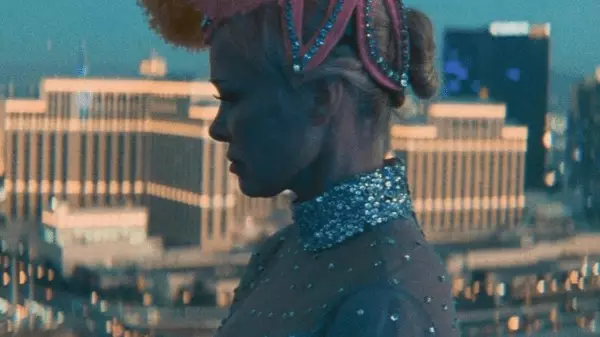Pamela Anderson’s return to the big screen is a momentous occasion, one that generations of fans and critics alike are watching closely. After years of navigating the tumultuous waters of fame, Anderson re-emerges in “The Last Showgirl,” directed by Gia Coppola. This film, poised for a theatrical release on December 13, brings to light not just Anderson’s storied career but also her undeniable parallels to Hollywood icons such as Marilyn Monroe. Coppola’s directorial vision reflects a deep aesthetic appreciation for both performers, revealing the unique attributes that made these women captivating on screen.
In crafting “The Last Showgirl,” Coppola draws inspiration from an array of talented women in film history, particularly focusing on the struggles and triumphs that shape them. After watching Anderson’s Netflix documentary, “Pamela, a Love Story,” Coppola found herself pondering how these icons navigate the complexities of fame, aging, and personal relationships. The character of Shelley, portrayed by Anderson, resonates with elements of both Anderson’s and Monroe’s experiences, as she faces a career crossroads after a prestigious Las Vegas show is abruptly cancelled. The narrative taps into the frustration of being an aging performer in an industry that often prioritizes youth, allowing viewers to reflect on the societal standards that often define beauty and success.
Coppola’s admiration for Anderson transcends mere nostalgia; she identifies Anderson as the “Marilyn of our time.” This statement encapsulates not only Anderson’s status as a cultural icon but also her intricate personality and artistic aspirations. Coppola observes that Anderson possesses a palpable intelligence and creative yearning, offering a glimpse into a woman who is not merely a superficial figure but rather a deeply artistic individual longing for self-expression. This nuanced portrayal provides audiences with a reflective lens through which to view Anderson’s experiences and struggles, particularly as she grapples with the dual pressures of motherhood and a demanding career in the spotlight.
For Anderson, embodying Shelley means navigating profound personal and professional rivalries. Speaking at a panel during the Toronto International Film Festival, she articulated her connection to the script, affirming that the role “was meant for me.” Her words encapsulate the heart of the film, revealing how deep-rooted her feelings are regarding authenticity within a façade-driven industry. She reflects on how her career has often focused on external perceptions rather than the deep, soul-stirring artistry that truly defines actors and performers.
As “The Last Showgirl” prepares for its debut, it emerges as a celebration not just of Anderson’s comeback but also of the complex narratives that surround women in entertainment. The film holds a mirror to Hollywood, provoking questions about aging, identity, and the continuous battle against stereotype. As viewers look forward to this cinematic offering, they may find themselves confronting their own notions of success, beauty, and the revelations that come with being both a performer and a woman in today’s world.


Leave a Reply